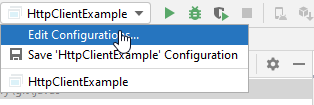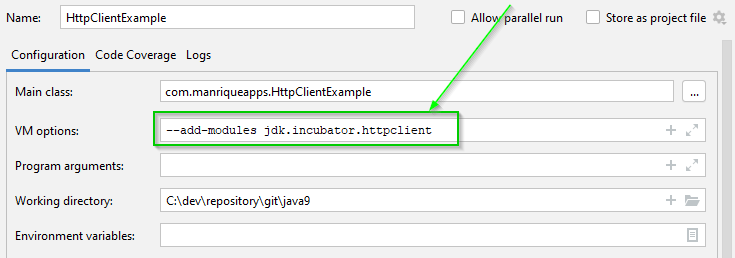What’s new in Java 9

In this post, we are going to see the most relevant features for developers introduced in Java 9. The percentage of companies still using Java 8 is high taking into account that this version was generally available on 21 September 2017.
Note that this version is not a long term support version (LTS) and it’s recommended to migrate to Java 11. However, features that we are covering in this post are in Java 11.
In the following link you can see the complete list of features of Java 9.
1 - Jigsaw project - Modular system
The idea of this project is to provide an standard module system for the developers and for the platform itself. With this modularization, we can scale down our applications to use in small computing devices. JDK modules will be used according to the application needs. Also, new modules can be created by developers.
Here is the simplest declaration of a module in Java 9:
module com.foo.bar { }
In the following declaration we declare that org.baz.qux module is required by com.foo.bar
module com.foo.bar {
requires org.baz.qux;
}
More info can be found in this jigsaw quickstart project.
2 - A new HTTP client
If you are using Java 8 and you need to call an API you could use HttpURLConnection as explained in this Stackoverflow thread or using Apache httpComponents. The good news is that from Java 9 you can use an Http client without using any external library.
import jdk.incubator.http.HttpClient;
import jdk.incubator.http.HttpRequest;
import jdk.incubator.http.HttpResponse;
import java.io.IOException;
import java.net.URI;
import java.net.URISyntaxException;
public class HttpClientExample {
public static void main(String[] args) throws IOException, InterruptedException, URISyntaxException {
HttpClient client = HttpClient.newBuilder()
.version(HttpClient.Version.HTTP_1_1)
.build();
HttpRequest request = HttpRequest.newBuilder()
.uri(new URI("http://postman-echo.com/get"))
.GET()
.build();
HttpResponse<String> response = client.send(request, HttpResponse.BodyHandler.asString());
System.out.println(response.statusCode());
System.out.println(response.body());
}
}
In Java 9 these classes were in package jdk.incubator.http and you need to import the module jdk.incubator.httpclient otherwise, you will receive the following error:
Error:(1, 21) java: package jdk.incubator.http is not visible
(package jdk.incubator.http is declared in module jdk.incubator.httpclient, which is not in the module graph)
To avoid this error we need to execute the main adding to the VM option that we want to use the incubator module. We go to edit

And we add the following VM option:

When we run the main we will receive a warning because we are using the incubator module.

Since Java 11 you can find these classes in java.net.http package.
3 - Process API
To manage and control the operating system processes this API has been improved.
public class ProcessAPIExample {
public static void main(String[] args) {
ProcessHandle process = ProcessHandle.current();
System.out.println(process.isAlive());
System.out.println(process.info().user().isPresent() ? process.info().user().get() : null);
System.out.println(process.info().totalCpuDuration().isPresent() ? process.info().totalCpuDuration().get() : null);
}
}
All these classes are in java.lang that’s why you don’t see any import in the previous class.
4 - Try-with-resources improvement
In Java 7 we needed to declare a variable for each resource managed by the statement. In Java 9 if the variable is final or effectively final variable we don’t need to create a new variable.
BestAutoCloseable bac = new BestAutoCloseable();
try (bac) {
// do some stuff with bac
}
try (new BestAutoCloseable() { }.finalWrapper.finalCloseable) {
// do some stuff with finalCloseable
} catch (Exception ex) { }
5 - Diamond operation extension
We can create anonymous classes with diamond operator
FooClass<?> fc1 = new FooClass<>(1) {
// anonymous inner class
};
6 - Private methods in interfaces
This can be used to split default long methods that we have in an interface.
interface InterfaceWithPrivateMethods {
default void execute() {
String result = aStaticPrivateMethod();
InterfaceWithPrivateMethods pvt = new InterfaceWithPrivateMethods() {
// anonymous class
};
result = pvt.anInstancePrivateMethod();
}
private static String aStaticPrivateMethod() {
return "static private";
}
private String anInstancePrivateMethod() {
return "instance private";
}
}}
7 - JShell command-line tool
In <JAVA_HOME>/bin we can find a new executable with the brand new JShell command-line tool. With this tool, we can read, evaluate, print, and loop (REPL). In the past, we had always need to create a main in a Java class. Now we can execute code snippets more easily.
Welcome to JShell -- Version 9
For an introduction type: /help intro
jshell> "Hello Java 9"
$2 ==> "Hello Java 9"
jshell> $2.substring(1,4);
$3 ==> "ell"
jshell> $2.substring(1,8);
$4 ==> "ello Ja"
8 - Immutable set
We have a new operation Set.of that creates in a single line of code an immutable Set. If we try to add something to this immutable Set we receive an UnsupportedOperationException exception.
Set<String> set = Set.of("firstkey", "secondkey", "thirdkey");
9 - Optional to stream
java.util.Optional.stream() allows using Streams on Optional elements:
List<String> list = optionals.stream()
.flatMap(Optional::stream)
.collect(Collectors.toList());
10 - Unified JVM logging
The goal of this improvement is to provide a unified logging system for all the components of the JVM .
When running our Java application if we add the new command line option -Xlog we will be able to use this new logging system.
i.e:
-Xlog:gc=debug:file=gc.txt:none
- log messages tagged with 'gc' tag using 'debug' level to
a file called 'gc.txt' with no decorations
More information of this in https://openjdk.java.net/jeps/158
Conclusion
Java 9 came in 2017 as a new version of the well-known Java programming language with modular characteristics and new features for developers to write better software with less effort using better tools. Which is your favourite Java 9 feature?

Comments